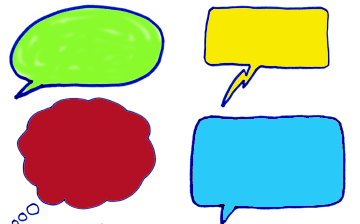When leading an organization or community group in a change process, there are a number of approaches. For example, SWOT analysis identifies strengths, weaknesses, opportunities, and threats. Needs assessments identify existing problems so that they can be addressed.
According to proponents of Appreciative Inquiry (AI), what the above approaches have in common is a focus on the negative—problems are identified and energy is expended on solving them. AI does the opposite. It focuses on what the community or organization does right and well and how to make them even better. Other key differences, beyond its positive or appreciative orientation, are the methodology and that it is about capacity building. While SWOT analysis and needs assessments often rely on existing data and paper surveys, AI asks questions about what works or what is good in small groups and one-on-one.
AI is not merely an assessment or analysis of the current situation. It uses an inquiry process that, if done well, creates wonder and awe in its participants. This qualitative, relational learning approach encourages the creation of dialogue within the organization, and draws out its stories and legends. When encouraged to ponder and discuss, members of an organization or community feel free to be more creative, expanding the realm of possibilities. AI enhances engagement, inclusivity, collaboration, learning, and hope. It is in this changed atmosphere that capacity is built.
Appreciative Inquiry, as the name suggests, is a positive approach of identifying strengths, appreciating them, and inquiring further on how these strengths can be built upon. Compare this to approaches in the field of youth work in the 1990s when programs focused on fixing or preventing one or more youth problems such as teen pregnancy, truancy, and alcohol use. Although we knew that the absence of these problems did not automatically prepare youth for adult life, reorienting our programs toward positive youth development, with a focus on promoting social, emotional, behavioral, and cognitive development, was a paradigm shift that fundamentally changed the field of youth work.
Developed by organizational development author David Cooperrider of Case Western Reserve University in the 1980s and updated since then, AI uses something called the 4-D Cycle:
- Discover: In this phase, people charged with changing an organization talk to each other to discover the times when the organization is at its best. They may be surprised to discover how many things they are already doing well, and hearing the positive experiences of others can be energizing.
- Dream: Sometimes run as a large group conference, a classic prompt in this phase is, “Describe your three concrete wishes for this organization.” Individuals’ rich visions can be very compelling.
- Design: Typically, small groups identify key relationships, how their dream overlaps with these others, and elements that will be needed to achieve the dream.
- Deliver / Destiny: At this implementation stage, maintaining the group’s energy level depends on a shared sense of destiny. But because AI is a cyclical process, discoveries of new strengths help to keep it going.
“At its core, AI is a solution-seeking approach, rather than a problem-solving approach," said Susan Jakes of North Carolina State University Extension and the CYFAR community editorial board. She has led groups through the AI process. “More change, and more lasting change, happens with AI. When groups focus on problems, they don’t get past the status quo.”
“I’ve talked to David Cooperrider himself, and we talked about how the four Ds are different from asset-based community development (ABCD). It is very different, although ABCD has pushed us away from a problem focus, and been transformative for children, youth, and family work. But many people have found it to be too structured—compiling an inventory or list of assets and community resources is cumbersome. AI focuses on the story. It’s a compelling inquiry to be involved in.”
Jakes cited one of the most famous AI efforts, Imagine Chicago. In 1995, after about two years of bringing intergenerational groups together to talk about life in Chicago and hopes for the city’s future, a report found three major positive outcomes:
- Participants felt a shared identity
- They gained a sense of intergenerational partnership
- They were able to imagine new possibilities for the future
Fifteen years later, Imagine Chicago is an organization that trains community groups to use this approach when implementing community change.
The newcomer to AI will ask, Mustn’t one first identify problems in order to move beyond them? Isn’t it naive to pretend that problems don’t exist? Jakes answers, “No.” She offers a quote from management authority Peter Drucker, who said, “The task of leadership is to create an alignment of strengths…making a system’s weaknesses irrelevant.”
Cooperrider, D., Whitney, D., & Stavros, J. (2009). Appreciative inquiry handbook: The first in a series of AI workbooks for leaders of change. Lakeshore Communications.
Peutz, J. & Kroth, M. (2009) Using appreciative inquiry to advance extension. Journal of Extension, 47(4).
